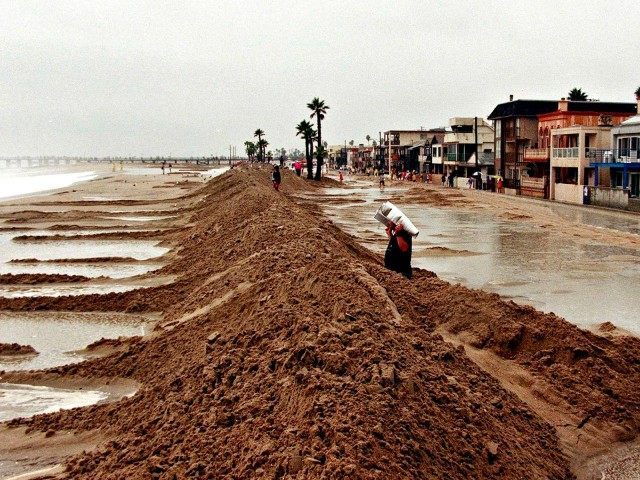Bill Patzert, climatologist at NASA’s Jet Propulsion Laboratory in Flintridge called this year’s Pacific warming the Godzilla of all El Niños in August, but it just got much bigger.
The planet is already experiencing the biggest El Niño ever recorded as some sections of the equatorial central and eastern Pacific Ocean sea surfaces are a stunning 10.8 degree Fahrenheit above normal, according to the NOAA Climate Prediction Center.
The prior record in 1997-98, saw sea surface temperature highs of only 8 degrees above normal. That year brought 13.8 inches of rainfall in one month.
With September and October now officially El Niño months, the National Weather Service’s Climate Prediction Center raised the odds of Southern California getting hammered with a wetter-than-average winter to 60 percent and dropped the odds of a dry winter to less than a percent. The odds of Northern California getting wetter-than-average winter moved up to 40 percent and a dry winter fell to under 27 percent.
Normal wind patterns in the Pacific Ocean are called the trade winds. They usually blow along the equator west to east, then up toward Japan, across to Northern Canada, and then down the West Coast.
But El Niño causes a rise in surface pressure over the Indian Ocean and Australia, then a fall in air pressure over the rest of the central and eastern Pacific Ocean. As a result, the trade wind spin in the other direction and warm air gets pushed from the east to the west coast of South America, and then up the West Coast of the U.S.
A recent paper published in journal Nature Communications confirms the link between the natural climate fluctuation known as the El Niño Southern Oscillation and food harvests of wheat, rice, corn and soybeans that provide nearly 60 per cent of all calories consumed by humans on the planet.
El Niño years were found to have a tendency for negative impacts on crop yields in 22 to 24 percent of growing regions, especially in Asia and Central America. But El Niño tended to have a positive impact on crop yields in 30 to 36 per cent of harvested regions, especially the United States and Canada.
The study estimates the global average negative impact of an El Niño on total crop harvests is between a 0.8 and 4 percent decrease for wheat, rice, corn and soybeans.
These numbers may not seem large to city folks, but five years of El Niño in the 1950s led to massive famine in China. In the late 1950s, food supplies dropped by 30 percent and immense starvation prevailed in China. Demographic data indicates that the crisis resulted in about 30 million excess deaths and about 33 million lost or postponed births.
Normally tropical Cuba and the Dominican Republic are already rationing water supplies. Panama reduced the size of ships allowed through the Panama Canal. Low water-levels are threatening hydroelectric power generation across the region with El Salvador and the Dominican Republic is experiencing periodic blackouts.
The regions’ dry conditions from May through September have damaged roughly half of the corn and a significant amount of the bean harvests. The prices of basic food staples in Central America have risen 40 percent in some areas since 2014.
Poor climate conditions and high prices have left hundreds of thousands of families across the region without access to basic food necessities. Many subsistence farmers in Honduras, Guatemala and El Salvador, do not have the money to buy food.
The U.N. Food and Agriculture Organization estimated that nearly 1 million people in Guatemala do not have sufficient food. The longer the drought lasts, the greater the humanitarian disaster will become.
Breitbart News reported that a massive northern migration has already begun. The D.C.-based Center for Immigration Studies estimates the population of foreign migrants in the United States grew by 790,000 since the beginning of 2014. That inflow is up sharply from the annual inflow average of roughly 350,000 migrants as Central America overtook Mexico as the largest contributor of U.S. border apprehensions in 2014.

COMMENTS
Please let us know if you're having issues with commenting.